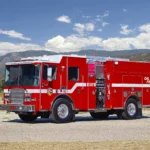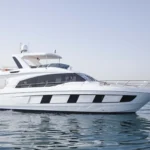
Welcome to the thrilling world of dirt bikes, where the roar of engines and the kick-up of dirt define the essence of off-road excitement. In this exploration, we delve into 25 historical facts and numerical trivia that trace the evolution of dirt bikes from their humble beginnings to the adrenaline-pumping spectacles witnessed on motocross tracks worldwide. From the birth of the first dirt bike in 1924 to the groundbreaking innovations of modern machines, we unravel the stories behind iconic moments, legendary riders, and record-breaking feats. Join us on a ride through time and discover the fascinating details that make dirt biking a captivating and ever-evolving chapter in the world of motorsports.
Birth of the Dirt Bike:
In 1924, Alfred Angus Scott, an avid motorcycle enthusiast, made history by crafting the first dirt bike, known as the Scott Flying Squirrel. This marked a pivotal moment in motorcycle evolution, as Scott incorporated innovative features such as a lightweight frame and a two-speed gearbox. The Flying Squirrel laid the groundwork for off-road motorcycles, setting the stage for the thrilling world of dirt biking.
First Motocross Race:
The roots of motocross can be traced back to 1928 when the first official off-road motorcycle race was organized in Camberley, Surrey, England. This event marked the birth of competitive motocross, with riders navigating challenging natural terrains, including dirt trails and uneven surfaces. The race showcased the exhilarating potential of off-road motorcycle competition and paved the way for the development of the modern motocross racing format.
YZ Moniker Debut:
Yamaha made a significant contribution to motocross in 1974 with the introduction of the YZ series. This marked a departure from traditional models, featuring cutting-edge technology and design. The YZ moniker became synonymous with high-performance motocross bikes, influencing the industry for decades to come. Yamaha’s commitment to innovation with the YZ series has left an enduring impact on the sport, elevating the standards for motocross motorcycles.
Evolution of Suspension:
The year 1975 witnessed a groundbreaking development in motocross technology when Honda unveiled the CR250M Elsinore. This marked the introduction of the first production motocross bike equipped with a rear monoshock suspension. The innovative suspension system enhanced rider control, responsiveness, and overall performance, revolutionizing the way motocross bikes handled rough terrains. Honda’s pioneering step in suspension design set a new benchmark for the motocross industry.
Introduction of the Four-Stroke:
In 1997, Yamaha made a historic comeback for four-stroke engines in motocross with the release of the YZ400F. After years of dominance by two-stroke engines, Yamaha’s four-stroke entry signaled a shift in the motocross landscape. The YZ400F not only demonstrated the viability of four-stroke engines in motocross but also triggered a trend that would reshape the competitive scene, leading to the widespread adoption of four-stroke technology.
First Electric Dirt Bike:
The year 2013 marked a significant milestone in the evolution of dirt bikes with KTM’s introduction of the Freeride E, one of the pioneering electric dirt bikes. Departing from traditional internal combustion engines, the Freeride E showcased the feasibility and potential of electric power in off-road motorcycles. This innovative leap not only addressed environmental concerns but also opened up new possibilities for the future of dirt biking technology.
Longest Motocross Jump:
On New Year’s Eve 2007, the daring Robbie Maddison etched his name in the record books by executing the longest motocross jump, spanning an impressive 378 feet. This awe-inspiring feat took place in Las Vegas, captivating audiences worldwide. Maddison’s record-breaking jump not only showcased the skill and courage of motocross riders but also elevated the sport to new heights of excitement and spectacle.
Highest Motocross Jump:
In 2008, Ronnie Renner soared to new heights, setting the record for the highest motocross jump at a staggering 46 feet, 9 inches. Renner’s gravity-defying feat occurred in a freestyle motocross setting, highlighting the fusion of athleticism and showmanship in the sport. This record remains a testament to the aerial prowess of motocross riders and the constant quest to push the boundaries of what is possible on two wheels.
Most Motocross World Championships:
Antonio Cairoli stands as a legend in the motocross world, securing an extraordinary nine FIM Motocross World Championships in the highly competitive MX1/MXGP class. Cairoli’s dominance, spanning from his debut in 2004, attests to his exceptional skill, consistency, and resilience in the face of formidable competition. His achievements have solidified his status as one of the all-time greats in motocross history.
Lightest Production Dirt Bike:
The 2022 KTM 125 SX has earned its place in motocross lore as one of the lightest production dirt bikes ever created, weighing in at a mere 87 kg (192 lbs). KTM’s dedication to lightweight design and cutting-edge materials has resulted in a bike that offers unparalleled agility and maneuverability on the track. The 125 SX exemplifies the industry’s continuous pursuit of lightweight performance, setting a standard for riders who prioritize nimble handling and precision in their motocross machines.
Heaviest Production Dirt Bike:
The 2022 Honda CRF450RX takes the spotlight as one of the heaviest production dirt bikes, tipping the scales at 127 kg (280 lbs). Honda’s CRF series has long been synonymous with durability and power, and the CRF450RX, designed for off-road endurance, embodies the brand’s commitment to robust performance. While weight is a crucial factor in motocross, the CRF450RX’s heft is offset by its powerful engine and rugged construction, catering to riders seeking resilience in demanding terrains.
Fastest Motocross Lap:
Romain Febvre etched his name in motocross history during the 2016 MXGP of the Netherlands by setting the record for the fastest lap. Clocking an astonishing 1:59.711, Febvre showcased unparalleled speed and precision on the track. This record not only highlights the exceptional skill of Febvre but also emphasizes the relentless pursuit of speed and efficiency that defines the world of professional motocross racing.
First Supercross Race:
1972 witnessed a pivotal moment in motocross history with the inception of the AMA Supercross Championship. The inaugural race unfolded in Los Angeles, California, marking the formal integration of stadium-style motocross racing. The introduction of supercross brought motocross to urban centers, captivating a wider audience and transforming the sport into a thrilling spectacle filled with jumps, rhythm sections, and intense competition.
Oldest Active Motocross Rider:
In 2014, Clarence “Pappy” Hoel made headlines as he completed a motocross race at the remarkable age of 101. Hoel’s enduring passion for the sport and his determination to continue riding well into his centenarian years serve as an inspiration to motocross enthusiasts of all ages. His story resonates as a testament to the timeless allure and enduring joy that motocross brings to riders, transcending generational boundaries.
Youngest Motocross World Champion:
James Stewart made motocross history in 2002 when he became the youngest Motocross World Champion at the tender age of 17. Stewart’s prodigious talent and fearless riding style propelled him to success, setting a record that still stands as a testament to his early dominance in the sport. This achievement marked the beginning of a stellar career that would see Stewart leave an indelible mark on the world of motocross.
Most Expensive Dirt Bike:
The Limited Edition Alta Motors Redshift MXR holds the distinction of being one of the most expensive dirt bikes ever produced, with a price tag of $84,000. This electric motocross bike, adorned with premium features and cutting-edge technology, represents a fusion of performance and innovation. The Redshift MXR caters to enthusiasts who prioritize exclusivity and top-tier engineering in their pursuit of the ultimate off-road riding experience.
Smallest Engine Size in Motocross:
Motocross racing for young riders often begins with 50cc bikes, where engine displacement is minimal. These lightweight machines, often the starting point for budding motocross prodigies, serve as a training ground for fundamental riding skills. The 50cc category not only introduces young riders to the thrill of motocross but also plays a crucial role in nurturing the next generation of champions.
Largest Engine Size in Motocross:
The Honda CR500R, produced until 2001, remains one of the largest-displacement motocross bikes in history. With a formidable 500cc engine, the CR500R was a powerhouse on the track, offering riders an adrenaline-fueled experience. While advancements in technology and changing regulations have shifted the landscape of motocross, the CR500R holds a revered place in the history of high-performance, large-displacement dirt bikes.
First Female Motocross World Champion:
In 2007, Steffi Laier made history by becoming the first-ever Women’s Motocross World Champion. Laier’s achievement marked a significant milestone for gender inclusivity in motocross, showcasing that skill and determination transcend gender boundaries. Her success paved the way for future generations of female riders, contributing to the growing recognition of women in the highly competitive world of motocross racing.
Motocross in the X Games:
The inclusion of motocross in the X Games in 1999 elevated the sport to a global stage, introducing it to a wider audience. Stadium-style motocross, featuring gravity-defying jumps and tricks, became a highlight of the X Games, attracting fans worldwide. The event not only showcased the athleticism of motocross riders but also solidified the sport’s status as a thrilling and dynamic spectacle, firmly embedded in the world of extreme sports.
Heaviest Production Dirt Bike:
The 2022 Honda CRF450RX holds the distinction of being one of the heaviest production dirt bikes, tipping the scales at 127 kg (280 lbs). Honda’s CRF450RX is designed for endurance races and off-road adventures, where durability and stability are paramount. The weight of this bike reflects the robust build and features that cater to riders seeking a powerful, reliable machine for navigating challenging terrains.
Fastest Motocross Lap:
Romain Febvre etched his name in motocross history during the 2016 MXGP of the Netherlands by setting the record for the fastest lap. Clocking in at an astonishing 1:59.711, Febvre’s performance showcased a perfect blend of skill, speed, and precision. This record not only highlights the capabilities of modern motocross machines but also stands as a benchmark for riders aspiring to achieve optimal lap times on the demanding motocross tracks.
First Supercross Race:
In 1972, the American Motorcyclist Association (AMA) introduced a groundbreaking event that would transform the landscape of motorcycle racing – the first AMA Supercross Championship. The inaugural race took place in the Los Angeles Coliseum, marking the inception of the Supercross series. This move from outdoor motocross to stadium-based supercross racing brought a new level of excitement and spectator engagement to the sport, creating a distinct and thrilling branch of motorcycle competition.
Oldest Active Motocross Rider:
Clarence “Pappy” Hoel, a living testament to the enduring spirit of motocross, made headlines in 2014 by completing a motocross race at the remarkable age of 101. Pappy Hoel’s dedication to the sport and his determination to continue racing well into his centennial years serve as an inspiration to riders of all ages, underscoring the timelessness and accessibility of the motocross community.
Youngest Motocross World Champion:
James Stewart made motocross history in 2002 by becoming the youngest-ever Motocross World Champion at the tender age of 17. Stewart’s remarkable achievement in the 125cc class highlighted not only his prodigious talent but also signaled a changing of the guard in motocross, with a new generation of riders ready to make their mark on the international stage.
Most Expensive Dirt Bike:
For those seeking the epitome of luxury in dirt biking, the Limited Edition Alta Motors Redshift MXR stands out as one of the most expensive dirt bikes ever produced, commanding a hefty price tag of $84,000. This electric dirt bike, with its high-performance capabilities and exclusive features, represents the pinnacle of innovation and luxury in the motocross world.
Smallest Engine Size in Motocross:
The smallest engine size commonly used in motocross is 50cc. These pint-sized machines are primarily utilized in youth racing categories, allowing young riders to enter the world of motocross and develop their skills on smaller, more manageable bikes before progressing to larger engine sizes.
Largest Engine Size in Motocross:
The Honda CR500R, with its formidable 500cc engine, stands as one of the largest-displacement motocross bikes. Produced until 2001, the CR500R earned a reputation for its raw power and aggressive performance, making it a favorite among riders who sought the exhilaration of handling a big-bore motocross machine.
First Female Motocross World Champion:
In 2007, Steffi Laier made history by becoming the first-ever Women’s Motocross World Champion. Laier’s accomplishment marked a pivotal moment for gender inclusion in motocross, showcasing the skill and determination of female riders on the international stage.
Motocross in the X Games:
The year 1999 witnessed a significant expansion of motocross into mainstream sports and entertainment with its inclusion in the X Games. The X Games provided a platform for motocross riders to showcase their skills in high-flying, gravity-defying tricks, bringing a new level of excitement and adrenaline to the sport. Motocross in the X Games became a staple, captivating audiences and further solidifying the sport’s popularity beyond traditional racing circuits.
Frequently Asked Questions about Dirt Bikes:
- What exactly is a Dirt Bike and how is it different from a regular motorcycle?
Dirt bikes are specialized motorcycles designed for tackling off-road terrains like trails, mud, sand, and rocks. Here’s how they differ from regular motorcycles:
- Built for Off-Road: Dirt bikes have lightweight frames for maneuverability and long-travel suspension to absorb impacts from jumps and bumps. Their knobby tires provide superior grip on loose surfaces compared to the smoother tires on street motorcycles.
- Safety Features: Dirt bikes prioritize off-road performance over street legality. They typically lack headlights, taillights, turn signals, and mirrors required for street use. Additionally, their exhaust emissions might not meet street standards.
- Engine Power: Dirt bikes come in a range of engine sizes, but they generally have smaller engines compared to street motorcycles. This keeps the weight down and allows for better handling on rough terrain.
- Is dirt biking dangerous?
Dirt biking can be dangerous, especially for beginners. Like any activity that involves speed and uneven terrain, there are risks of accidents and injuries. However, these risks can be mitigated by following safety precautions:
- Wearing proper safety gear: This includes a helmet, goggles, gloves, sturdy boots, elbow and knee pads, and a chest protector.
- Taking a riding course: Learning proper techniques from qualified instructors can significantly improve your skills and reduce the risk of accidents.
- Starting on appropriate terrain: Beginners should stick to flat, open areas and gradually progress to more challenging trails as their skills develop.
- Riding within your limits: Don’t push yourself beyond your skill level or attempt maneuvers you’re not comfortable with.
- How much does it cost to get into dirt biking?
The cost of getting into dirt biking can vary depending on a few factors:
- The bike itself: Dirt bikes come in a wide range of prices depending on the size, brand, and features. You can find new or used bikes at dealerships or through private sellers.
- Safety gear: A good quality helmet is essential and other protective gear adds to the cost.
- Maintenance: Dirt bikes require regular maintenance to keep them running smoothly and safely.
- Do I need a license to ride a dirt bike?
Whether you need a license to ride a dirt bike depends on where you plan to ride.
- On private property: If you have permission from the landowner, you generally don’t need a license to ride on private property.
- On public land: Many public lands require off-highway vehicle (OHV) registrations or permits for dirt biking. The specific requirements can vary by location, so it’s important to check with your local land management agency.
- On motocross tracks: Some motocross tracks may require memberships or specific licenses for racing or practicing.
- What are some of the benefits of dirt biking?
Dirt biking can be a fun and rewarding activity that offers a number of benefits:
- Exercise and fitness: Dirt biking is a great workout that strengthens muscles, improves coordination, and burns calories.
- Stress relief: Enjoying the outdoors and the thrill of riding a dirt bike can be a great way to de-stress and clear your head.
- Challenge and skill development: Dirt biking requires focus, control, and problem-solving skills, making it a mentally stimulating activity.
- Social connections: Dirt biking can be a social activity. You can join riding clubs or groups to connect with other riders and explore trails together.









